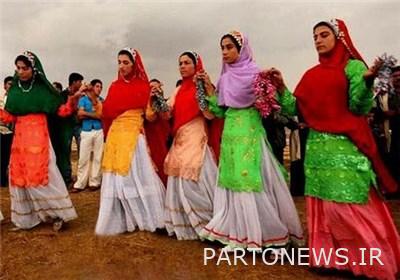To be of the same color as the congregation; A factor of dislike for local clothes

The head of the Chaharmahal and Bakhtiari Foundation for Iranian Studies, pointing out that local clothes and clothing originate from the type of view, thought, life and climatic conditions, said: This is because, in proportion to the growth and development of technology and the change of culture, people subject themselves to the type of public view.
In an interview with ISNA, Abbas Ghanbari stated that clothing or apparel is a two-pronged category: one aspect is clothing and the other is cultural, social and immaterial.
He said that there are three cultures of urban, rural and nomadic in the country, adding: 50% of the population of Chaharmahal and Bakhtiari were nomads when this group, due to intra-provincial issues and government pressures, tended to rural and urban, so that Today, less than two percent of the country’s population are nomads.
The head of the Chaharmahal and Bakhtiari Iranian Studies Foundation, pointing out that local clothes and clothing originate from the type of view, thought, life and climatic conditions, said: If today the culture of using local clothing including Bakhtiari, Qashqai and… in the country and province Faded, it is due to the fact that in proportion to the growth and development of technology and cultural change, people subject themselves to the type of public view.
He reminded: “Depending on the time and society, although local clothes can not be worn, but for example, patterns engraved on the elastic can be engraved on a scarf or mask, or if a nomadic youth can not use Chogha, the Chogha symbol can be used in He used his clothes and school clothes.
Ghanbari pointed out: Even some people use local symbols such as giweh, hats and nomadic living accessories to decorate the building, house and squares of the city. At present, the nomadic square and Ferdowsi square of Shahrekord are decorated with symbols of nomadic life It can be seen in social functions.
Regarding the symbol of Chogha, he explained: Chogha originated from Choghaznabil as a symbol of monotheistic worship and the white lines of Chogha express good, goodness and positive energies. The white lines next to the black lines indicate good and bad times.
The head of the Chaharmahal and Bakhtiari Foundation for Iranian Studies continued: “It is possible to emulate the color in the elastic and enamel of Bakhtiari clothes, because it conveys freshness and dynamism to children, as psychologists have described the effect of color on learning.”
Ghanbari, stating that there is unity and solidarity among the Iranian tribes, said: In Chaharmahal and Bakhtiari, there is unity between a Persian, Bakhtiari and Qashqai people, and if there is a difference between individuals, it has nothing to do with their race.
He said: “Of course, some may highlight the differences between people according to personal intentions, we must be careful not to insult the people, beliefs, proverbs and culture of that city and village.”
Ghanbari added: “If there is patience among individuals, the unity between the tribes will also be maintained, so that in the city of Saman or the city of Kian, which are Turkic-speaking, Bakhtiari families live and even speak Turkish.”
He explained that local clothes have become more decorative: the concept of decorative can have two positive and negative meanings, the positive meaning is artistic effects and functions, it may be a traditional but elegant cover and has an artistic aspect, but the face The downside is that it goes to the fringes and unnecessary functions of the veil to destroy the original nature of the veil, but in general, in local clothing, there is no body covering, highlighting and highlighting of the body, and in a way, the veil itself counts.
Ghanbari stressed: The General Directorate of Cultural Heritage, Handicrafts and Tourism and the Public Culture Council should invest in strengthening the foundations of the dialect, literature and positive customs of the Chaharmahal and Bakhtiari tribes because these factors are passive defense, as they strengthen the foundations of national art. .
He concluded: “One should not believe that traditional dress is just a dress for a wedding or gathering a customer in a restaurant, because it is an insult to that dress, the dress is of artistic originality and the rich Iranian philosophy lies behind it.” Has been.

